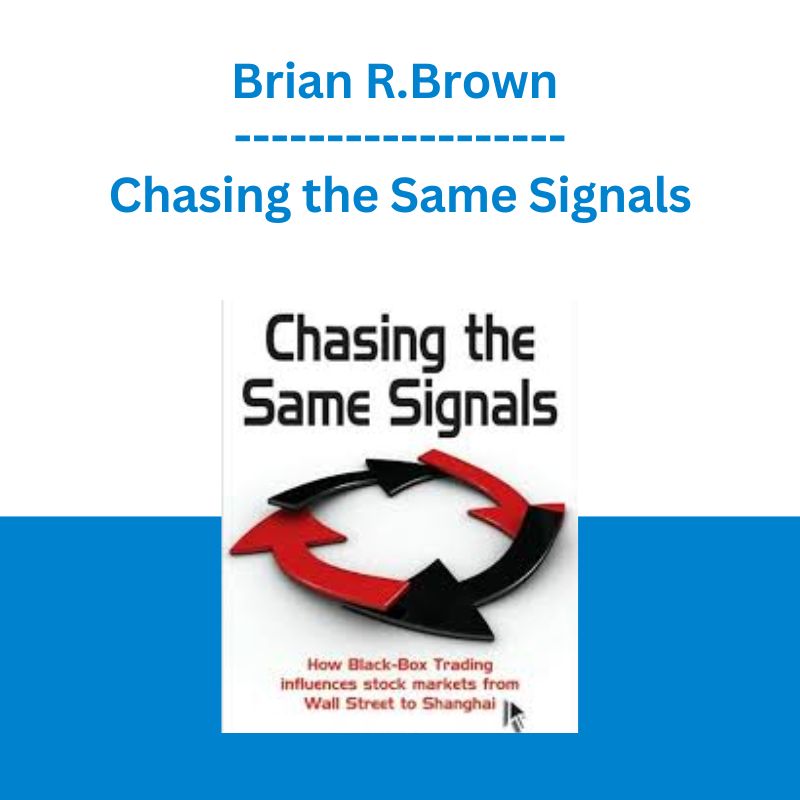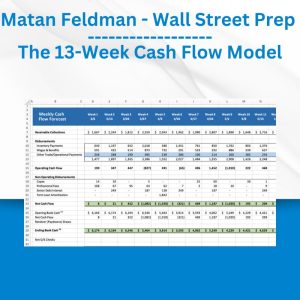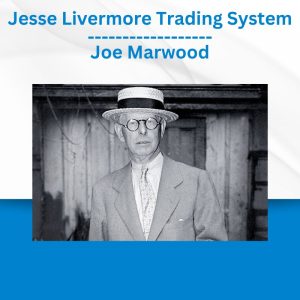*** Proof of Product ***
Exploring the Essential Features of “Brian R.Brown – Chasing the Same Signals”
If you want to understand how computerized trading is impacting our markets, this book is for you.
— Charles D. Ellis, Author, The Partnership: The Making of Goldman SachsThe interplay between algorithmically driven and traditional trading strategies affects the returns of all investors. Brian Brown’s new book provides a very clear overview of how these new strategies work and more importantly, how they influence liquidity, volatility, and prices in the global equity market.
— Andrew J. Morton, Co-creator of the Heath-Jarrow-Morton (HJM) FrameworkTechnology advances over the past decade have dramatically changed the dynamic world of stock market trading. Most analysts have failed to account for this “brave new world” in their “Monday morning quarterback” analysis of the recent worldwide financial systems collapse. Brian Brown has written the first book that clearly and colorfully describes the new technologically-driven way of doing business on the Street, and he does this with great precision and street knowledge. This new world played a central role in the Wall Street collapse, and, paradoxically, will help drive the next ascent.
— Thomas F. Coleman, Dean and Professor, Faculty of Mathematics
Director, Waterloo Research Institute in Insurance, Securities, and Quantitative Finance, University of Waterloo
Much has been made of the activities of “High Frequency Traders” during the Global Financial Crisis. In many cases they have been vilified, but often out of ignorance about the vital function that they perform in today’s hyper-speed financial markets. Brian sets out to demystify High Frequency Trading and does so in an eminently readable fashion. This book will appeal to anyone, market professional or not, who wants to understand this often secretive group.
— E. John Fildes, Chief Operating Officer, Asia, Instinet Pacific
–This text refers to an out of print or unavailable edition of this title.
From the Inside Flap
A year before the subprime financial crisis materialized, there was a subtle warning that global equity markets were in distress. During August 2007, there was a 30 percent gap between the top stocks and the worst stocks; but the index itself was unchanged. Weeks later, prominent hedge funds came forward with similar stories about suffering massive losses in a single day. It was the world’s first stock market panic-by machines that were Chasing the Same Signals.
Over the past decade, “black-box” trading has come of age. These firms use mathematical formulas and computer wizardry to buy and sell stocks. The industry attracts the likes of mathematicians and physicists and their investment philosophy is a marriage of science and economics. Quantitative trading has a long history, but the industry was transformed when technology allowed investors to trade stocks electronically.
The 2007 crisis didn’t mark the demise of the black-box firms; rather the opposite. They were the first to feel the impact of the financial crisis, but were the best prepared during the aftermath. And now they’ve grown: more than 50 percent of today’s investors are computers.
The rise of black-box trading has led to a number of important questions: Are they creating volatility or stabilizing the market? Why are large price swings and reversals more prevalent than ever? What happened to the buy-and-hold investor? And what does their trading mean to mom-and-pop investors who interpret the health of our economy through CNN each morning?
In Chasing the Same Signals, author Brian Brown offers fascinating insights into the world of cyber-trading and speculates on a future where Wall Street is dominated by computers.
–This text refers to an out of print or unavailable edition of this title.
From the Back Cover
A year before the subprime financial crisis materialized, there was a subtle warning that global equity markets were in distress. During August 2007, there was a 30 percent gap between the top stocks and the worst stocks; but the index itself was unchanged. Weeks later, prominent hedge funds came forward with similar stories about suffering massive losses in a single day. It was the world’s first stock market panic-by machines that were Chasing the Same Signals.
Over the past decade, “black-box” trading has come of age. These firms use mathematical formulas and computer wizardry to buy and sell stocks. The industry attracts the likes of mathematicians and physicists and their investment philosophy is a marriage of science and economics. Quantitative trading has a long history, but the industry was transformed when technology allowed investors to trade stocks electronically.
The 2007 crisis didn’t mark the demise of the black-box firms; rather the opposite. They were the first to feel the impact of the financial crisis, but were the best prepared during the aftermath. And now they’ve grown: more than 50 percent of today’s investors are computers.
The rise of black-box trading has led to a number of important questions: Are they creating volatility or stabilizing the market? Why are large price swings and reversals more prevalent than ever? What happened to the buy-and-hold investor? And what does their trading mean to mom-and-pop investors who interpret the health of our economy through CNN each morning?
In Chasing the Same Signals, author Brian Brown offers fascinating insights into the world of cyber-trading and speculates on a future where Wall Street is dominated by computers.
–This text refers to an out of print or unavailable edition of this title.
Please see the full list of alternative group-buy courses available here: https://lunacourse.com/shop/










 Toshko Raychev - Profit System + ITF Assistant
Toshko Raychev - Profit System + ITF Assistant  Atlas API Training - API 570 Exam Prep Training Course
Atlas API Training - API 570 Exam Prep Training Course  Simpler Trading – Danielle Shay – Options Freedom Formula (Elite Package)
Simpler Trading – Danielle Shay – Options Freedom Formula (Elite Package)  Julie Stoian & Cathy Olson - Launch Gorgeous - Funnel Gorgeous Bundle
Julie Stoian & Cathy Olson - Launch Gorgeous - Funnel Gorgeous Bundle  Jesse Livermore Trading System - Joe Marwood
Jesse Livermore Trading System - Joe Marwood  Matthew Kratter - Trader University
Matthew Kratter - Trader University